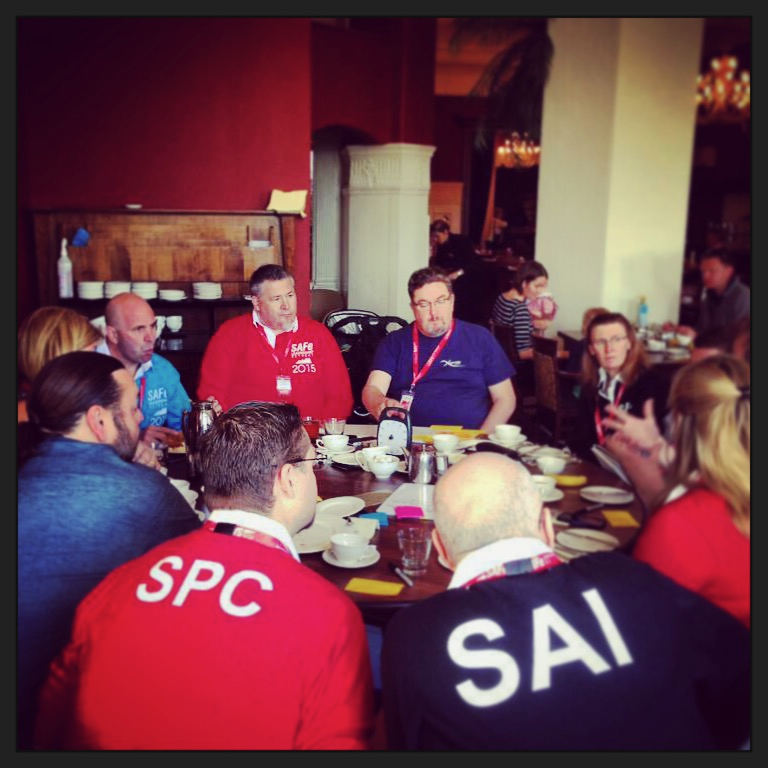I just read Steve Denning’s article about “fake agile” and while I agree that there is a great deal of misrepresentation and dysfunction surrounding agile, I wonder if there are other factors, perhaps human ones, that are not addressed in the article.
I’ve been working as an agile coach for several years and I have seen clients enjoy sustainable success with SAFe, Scrum and homegrown lean agile approaches. These coaching engagements, as well as countless discussions I’ve had to understand other’s agile journeys, have led me to believe that there are several factors, beyond a foundation of persistent agile teams or framework chosen, that impact the success and, importantly, the sustainability of a transformation.
I’d like to share the three that came to mind today;
- Does a company value their customer’s outcomes over their own?
- Do leaders value and foster experimentation?
- Are coaches and transformation consultants focused on helping their clients achieve self-sufficient sustainable success through agility?
1. Does a true focus on achieving customers’ outcomes influence decision making throughout the business, IT, etc? Are there Lean Startup and Lean UX practices in place to create faster feedback loops to better understand and serve customers? Do the metrics being watched matter to the customers or are leading indicators leveraged to pivot from work that will not move the outcome forward? Is being “customer-obsessed” supported by underlying values or is it just lip service? If the latter, I suspect it could obscure the perception of the value of an agile approach or framework.
2. Are the senior leaders engaged learners open to experimenting with new values and methods for investing, measuring and leading? If leaders at all levels consistently make decisions based on lean and agile values that enable business agility, could you not see a higher instance of sustainable success irregardless of the methodology or framework they use?
Alternatively, could there be leaders, coaches or consultants who are working towards an alternative outcome while outwardly advocating a transformation to agile?
What if a consulting company advised a client’s senior leadership to change from Scrum to Spotify(ish) as they advised the former was doomed to fail? In that case, the internal presentations and communications could trumpet increased transparency and promise even more autonomy to workers. In fact, to ensure that people were given the autonomy to choose a position they desired, the company could require all employees to reapply for a new role in the new “even more agile” model.
Press releases could show the company’s increased commitment to business agility. The consulting company could highlight the failure of Scrum. The company could even announce how efficient the new model was by highlighting major reductions in development and operating costs. What could be left out of the story was the fact that there were only enough jobs available to accommodate 60% of the existing employees and that most of that efficiency came from laying off 40% of their workers.
3. Are the coaches and change leaders focused on helping their clients quickly and effectively achieving self-sufficiency? Or, could they be working towards other outcomes, such as creating a dependency on their expertise, fostering doubt around the framework if it was not one with which they partnered or otherwise working to extend the coaching engagement timeline and footprint in hopes of continuing to increase their revenue?
I’ve seen a client interview hundreds of coaches across five vendors. This client had a significant challenge finding people who possessed the desired skills, experience and personality as well as a willingness to serve in the background as opposed to the forefront. The client had a team of internal employee coaches who were largely inexperienced. The majority of them had no experience outside the client and did not see being a coach as servant leader role.
The internal coaches observed external consultants gain esteem and prestige through positioning themselves as an expert or savior. Of the external coaches the client brought on, very few had the patience to cultivate and extend the capabilities of the internal coaches despite that being one of the client’s critical outcomes. Ultimately, the client shifted vendors to achieve the outcome they needed to truly lead their own transformation.
I’ve also seen one consulting company be removed from a company after another promises more success through switching to a “better” one. Is the root issue the specific framework or does that become the perception as the company has to spend even more money to change again?
Whether a client chooses LeSS, S@S, SAFe, Spotifyish, etc. I believe that the outcome is too often influenced, or even controlled, by the agenda of the ones leading the change. Is it possible that this is the systemic issue with Agile today as opposed to a problem with a specific framework?
I’d like to gain insights into how someone who judges a specific approach or framework factors in the widely variable actions and agendas of people serving as coaches or leading a transformation. How do they know that these human elements are not impacting the perceived efficacy of a framework or approach?
Please help me understand.
Phil



